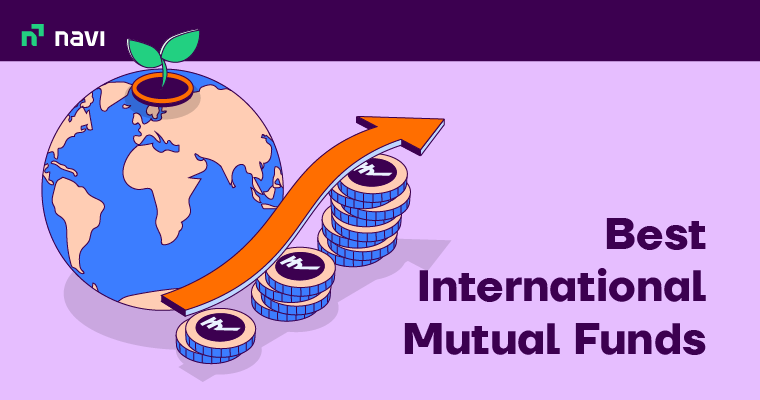Why Invest in Global Mutual Funds: India’s Smart Move for 2025
Unlock international growth: Indian investors increasingly diversify via global mutual funds — here’s why they’re the smart play in 2025.
🔥 Introduction: The Global Shift You Can’t Afford to Miss
Investors across India are tuning out local volatility and turning their gaze outward. With soaring equity markets at home and the promise of global tech, healthcare, and AI leaders, global mutual funds are no longer optional — they’re essential.
This trend is backed by hard data and evolving policy changes that make foreign diversification not just smart—but tax‑efficient too.
📊 Section 1: India’s Mutual Fund Boom & Global Fund Surge
📈 Domestic Growth
-
In FY25, the Indian mutual fund industry hit ₹65.74–72 lakh crore AUM, growing over 23% year‑on‑year
-
Equity‑oriented funds alone saw ₹4.17 lakh crore inflows
-
SIPs now contribute over ₹13.35 lakh crore AUM, up 45% YoY
🌍 Global Funds Momentum
-
Inflows in overseas mutual funds tripled in early 2025 (Feb: ₹246 crore vs ₹77 crore in Jan)
-
Global FoF/ETFs AUM grew over 16× in a decade, now forming a meaningful part of “Other Schemes”
-
Tax reforms have lowered LTCG tax to 12.5% (1–2 year holding) for global equity funds & ETFs, replacing older penal rates Value Research Online
🚀 Section 2: Why Global Mutual Funds Now? Top Benefits for Indian Investors
1. Geographic Risk Diversification
-
Exposure to markets like USA, Europe, Japan, China, helps offset domestic market dips. US equity AUM grew modestly while other markets delivered higher growth in 2025 newindianexpress.com
2. Access to Global Growth Engines
-
Participate in themes such as AI, EVs, biotech, cloud computing, industries largely absent in Indian market newindianexpress.com
3. Currency Advantage
-
Investing in foreign currencies provides hedged exposure and potential gains if overseas economies outperform and rupee weakens newindianexpress.com
4. Tax Efficiency for Long-Term Investors
-
New regulations: ETF gains taxed after just one year, FoFs after two years — both at 12.5%, significantly lower for long-term holders Value Research Online
5. Strong Risk-adjusted Returns
-
Emerging markets outside India delivered ~9% returns while S&P 500 fell ~5% in 2025, showing superior relative performance kiplinger.com
🧭 Section 3: Real‑World Examples & Practical Investment Tips
🔍 Example Portfolios Incorporating Global Funds
| Portfolio Type | Domestic (70–90%) | Global (10–30%) | Purpose |
|---|---|---|---|
| Conservative Mix | Large-/mid‑cap, hybrids | Global ETFs focused on stable markets | Risk diversification |
| Growth Focused | Indian mid-/small caps | Global tech & AI equity FoFs | Exposure to global growth leaders |
| Multi‑Asset SIP | Equity + debt domestic | Global ETF component | Long‑term balanced wealth strategy |
Case Study: An Indian SIP of ₹10,000/month in an S&P 500 ETF over 20 years grows to ₹87.1 lakh. Under old taxation (30%), post‑tax falls to ₹68.2 lakh; new 12.5% tax regime brings corpus to ₹79.2 lakh — a gain of ₹11 lakh purely via lower tax
✅ Expert Tips from ManikaTaxWise.com
-
Start with 10–15% allocation to global funds; gradually scale to 20–30% depending on risk appetite.
-
Rebalance annually to maintain your target allocation.
-
Opt for low‑cost ETFs or FoFs with transparent track records.
-
Hold for at least 3–5 years to benefit from tax efficiency and compounding.
🧠 Section 4: Risks & How to Mitigate Them
⚠ Potential Risks
-
Currency risk: Forex movements can impact returns.
-
Geopolitical instability: Tariffs, policy shifts, or global slowdowns.
-
Interest rate uncertainty: Rising US rates can affect valuations.
✅ Mitigation Strategies
-
Diversify across regions and currencies.
-
Choose funds that hedge currency or offer multi-regional diversification.
-
Invest via SIPs to average cost.
-
Stay informed on macroeconomic shifts; maybe cap global exposure at 30%.
✍️ Section 5: How to Choose the Right Global Fund
Key Selection Criteria
-
Expense ratio, long-term performance vs global benchmarks
-
AUM size, minimum investments, SIP options
-
Fund structure (FoF vs ETF), currency hedging
-
Fund house credibility (e.g., Kotak, ICICI Prudential, DSP)
Shortlist of Reliable Global Mutual Funds
-
ICICI Prudential US Bluechip Equity Fund – ~15.7% 5‑year returns
-
DSP US Flexible Equity Fund – ~14.7% annualized returns
-
Kotak Multi‑Asset Global FoF – diversified across equities and debt Navi
❓ Frequently Asked Questions (FAQs)
Q1: How much of my portfolio should be global mutual funds?
Start with 10–15%, scale gradually to 20–30% as comfort increases.
Q2: Are global mutual funds taxed differently?
Yes—under new norms, 12.5% LTCG for holdings of 1–2 years; higher shorter term taxation may apply.
Q3: Are ETFs better than FoFs?
ETFs can have lower fees and shorter holding periods, but both can suit depending on your timeline and risk profile.
Q4: What about currency risk?
Currency risk exists but can be partially mitigated via diversification and regular contributions via SIP.
Q5: Is global investing suitable for new investors?
Yes—as long as you stay educated, start small, and hold long-term with a disciplined plan.
✅ Expert Tip from ManikaTaxWise.com
“Allocate a modest global fund SIP (~₹500–₹1,000/month) to begin. Track its performance annually, reinvest dividends, and increase gradually toward your risk tolerance—it’s a powerful way to embed international exposure while managing volatility.”
🎯 Conclusion & Call to Action
Global mutual funds offer Indian investors a potent mix of diversification, global growth access, and tax efficiency. With rising inflows, supportive regulatory changes, and proven global returns, there’s no better time than now to make this shift.
Visit ManikaTaxWise.com for deeper guides, fund comparisons, SIP calculators, and personal portfolio templates.
Loved this article? Follow ManikaTaxWise.com or leave a comment below sharing your global investing plan!

